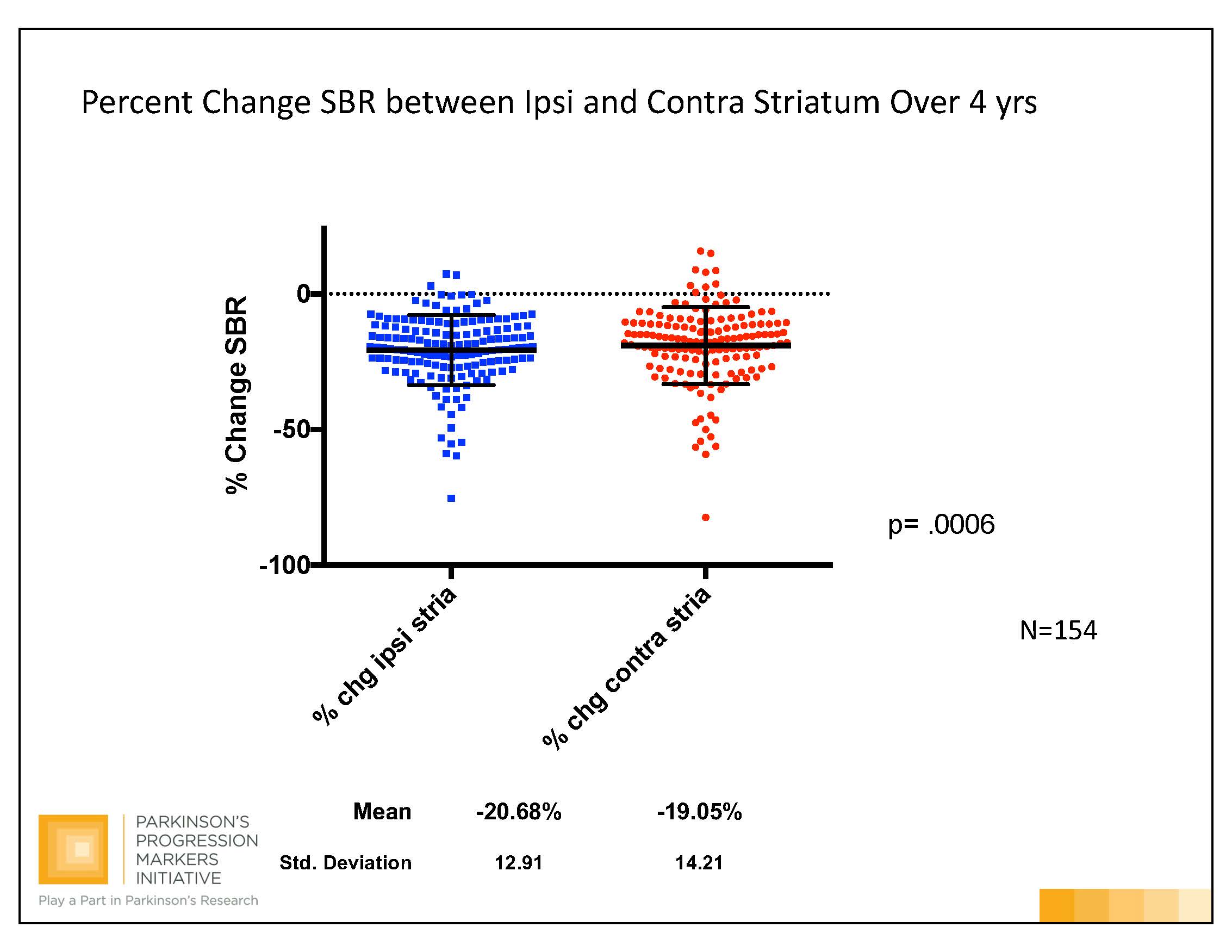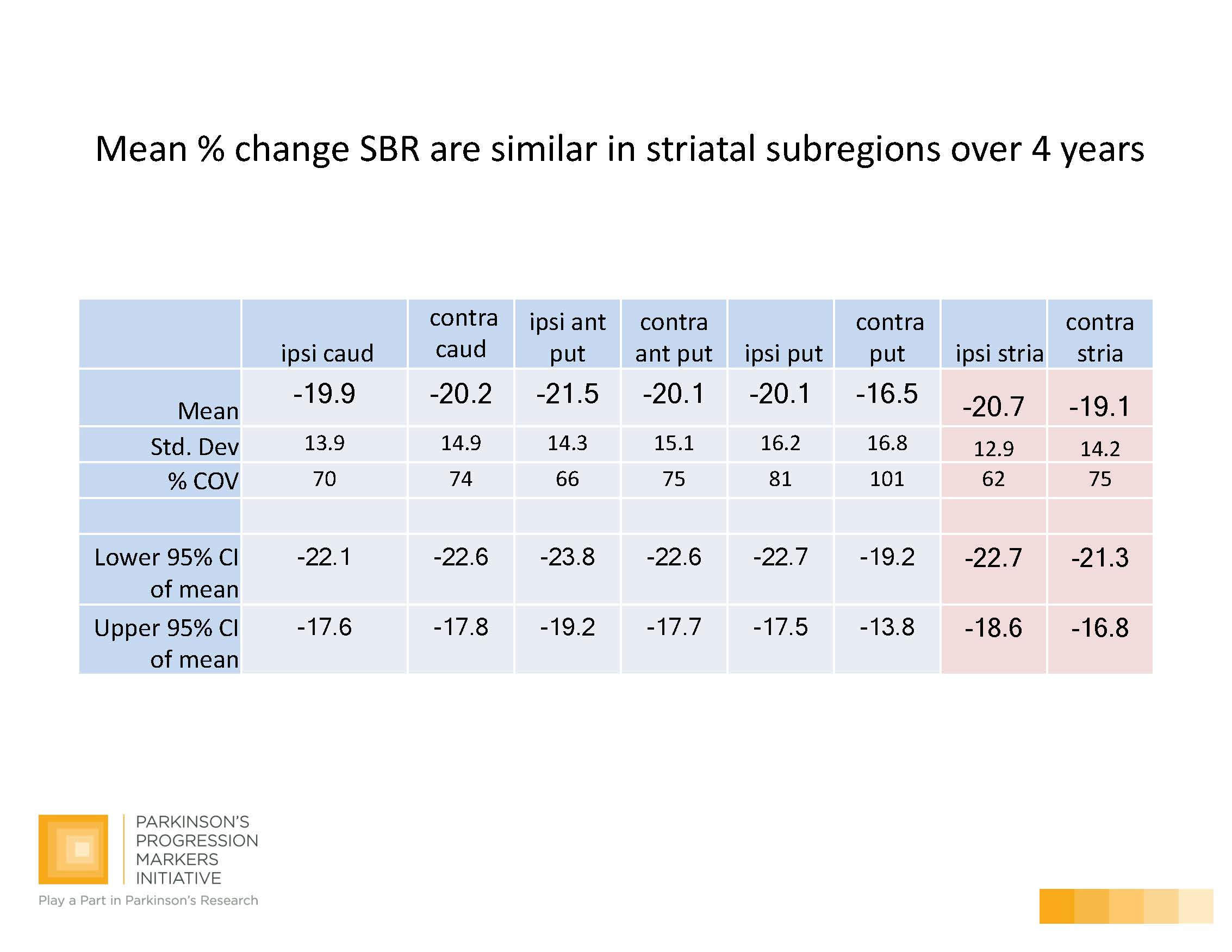Session Information
Date: Thursday, June 8, 2017
Session Title: Parkinson's Disease: Neuroimaging And Neurophysiology
Session Time: 1:15pm-2:45pm
Location: Exhibit Hall C
Objective: To evaluate within subject striatal changes in dopamine transporter (DAT) binding using 123-I Ioflupane SPECT in PD participants studied over four years in the Parkinson Progression Marker Initiative (PPMI) study.
Background: Clinical measures of Parkinson’s disease progression suggest a slow process with significant variability both between patients and within the individual over the course of disease. A number of “objective” imaging and non-imaging measures have been proposed as putative progression biomarkers although there is limited validation data available. The PPMI study is an international longitudinal evaluation of biomarkers in a progressing early Parkinson’s disease population. Scintigraphic biomarkers are being evaluated as indicators of progression including the dopamine transporter (DAT) imaging with 123-I ioflupane SPECT.
Methods: In an ongoing study 154 de novo PD subjects completed baseline, 2yr, 3yr, and 4yr clinical and 123I-Ioflupane/SPECT evaluations. Clinical evaluations included UPDRS and cognitive testing. Changes in specific binding ratio (SBR) between baseline and 2-yr, 3-yr, and 4-yr scans were calculated for ipsilateral and contralateral striatum as well as striatal subregions. Rates of SPECT signal change were compared with changes in clinical ratings.
Results: Longitudinal follow-up of the PPMI cohort demonstrates annualized rates of % change in composite SBR to be10-12% in the first year with lower reductions in SBR by year 4, for an average annualized change of 7%.When parsed out into subregions, in Y 1 there is a progressive increase in the rate of change in SBR in the ipsilateral striatum in an anterior to posterior pattern moving from caudate to anterior putamen to posterior putamen. This pattern is not seen on the contralateral side. By Y4 the rates of SBR change equalizes across subregions, without evidence of cessation due to low signal:noise. While subregions eventually have equivalent % change SBR, the variance is higher for lower uptake areas like contralateral putamen.
Conclusions: The use of 123-I ioflupane SPECT as a biomarker of PD progression is feasible from the perspective of the size of signal change in an early PD cohort with the better regions for tracking early change the composite SBR or caudate.
To cite this abstract in AMA style:
J. Seibyl, K. Marek. Patterns of Striatal DAT Binding Loss in a Progressing Parkinson Disease (PD) Cohort: Four year PPMI Follow-up [abstract]. Mov Disord. 2017; 32 (suppl 2). https://www.mdsabstracts.org/abstract/patterns-of-striatal-dat-binding-loss-in-a-progressing-parkinson-disease-pd-cohort-four-year-ppmi-follow-up/. Accessed December 2, 2025.« Back to 2017 International Congress
MDS Abstracts - https://www.mdsabstracts.org/abstract/patterns-of-striatal-dat-binding-loss-in-a-progressing-parkinson-disease-pd-cohort-four-year-ppmi-follow-up/


